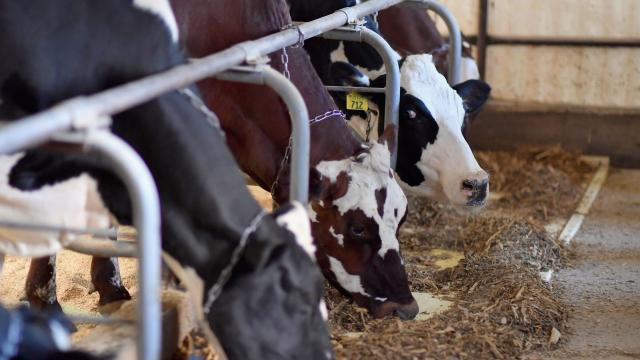If the world’s population grows to 10 billion by 2050 as projected, the world will need to produce 70 per cent more food. Without major changes to the food system, that would result in a catastrophic increase in greenhouse gas pollution due to increases in agriculture and deforestation. New research shows that there’s a lot we can do to feed people without creating more carbon pollution, but it will require changing many aspects of the global food system.
In past United Nations (UN) climate reports, food-related emissions from agriculture, transportation, industry and consumption have been reported separately. But in a study published this week in Nature Food, scientists argue that “unless these are conceptualised as a unified whole, climate change mitigation and adaptation strategies associated with the food system are likely to be inefficient and possibly counterproductive.”
The authors of the paper also wrote the food security chapter of the landmark report on climate change and land published last year. By examining a wide range of global food systems, from major commodity and livestock producers to small farming systems, they found that together, agriculture, food production and transportation represent 21 to 37 per cent of total human-caused greenhouse gas emissions. But that footprint could be a lot smaller.
Food waste, for instance, is responsible for 8–10 per cent of global greenhouse gas emissions. Some 25 to 30 per cent of food created globally is wasted. That by itself is a problem, but it also creates the demand for additional agricultural production to fill the gap, which in turn creates more emissions. To solve this, the researchers suggest world leaders look outside of the realm of agriculture and implement system-wide strategies to reduce waste.
Technical measures, like improving harvesting, storage, and packaging to keep food fresher for longer could play a major role. So could behavioural changes such as encouraging “acceptance of less-than-perfect fruit and vegetable appearance” and lowering the prices of food that’s close to expiring.
The authors also suggest a global shift to eating more plants. Producing plants is less carbon-intensive than producing meat, and also requires less land. With the leftover room, we could plant trees that sequester carbon. The combined effect could result in reducing global carbon emissions by more than 15 per cent. But this will only work if people actually eat the plants that are being produced, so the researchers say these changes must be coupled with demand-side changes including educating the public about the benefits of eating more vegetables.
Changing crop management practices could make a big dent in carbon emissions, too. By better controlling erosion, diversifying crops, and farming with more soil organic matter by using harvested crops’ stems or livestock manure for fertiliser, farmers’ could produce bigger and more resilient yields. That would lessen the need to farm more, and thereby reduce greenhouse gases.
As the researchers show, there are ways to feed more people without adding to emissions, but they’ll only work if those in the many parts of the food system get on board.
“Actions aimed at changing only some of the component parts of the food system are not going to solve the climate crisis,” Cynthia Rosenzweig, NASA scientist and lead author of the paper, in a statement. “We need all actors and institutions involved in the many different parts of the food system to understand their roles and impacts, and to make the informed choices needed for widespread transformation.”
